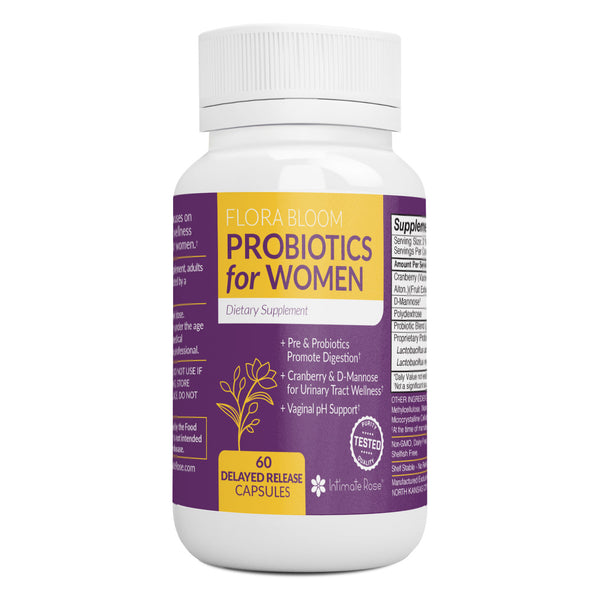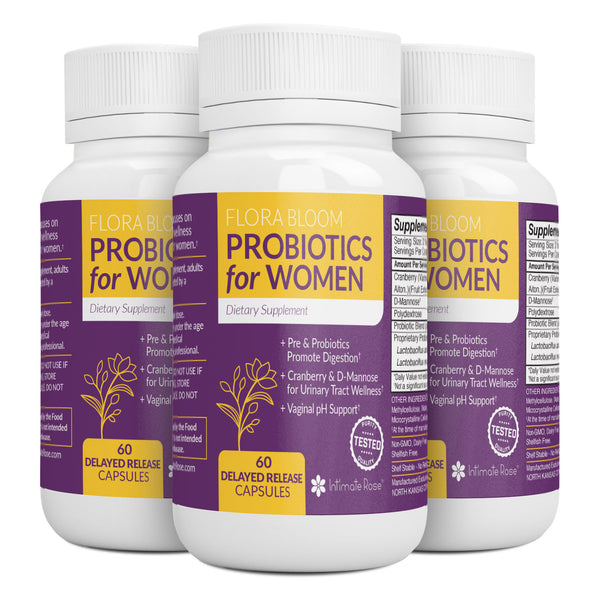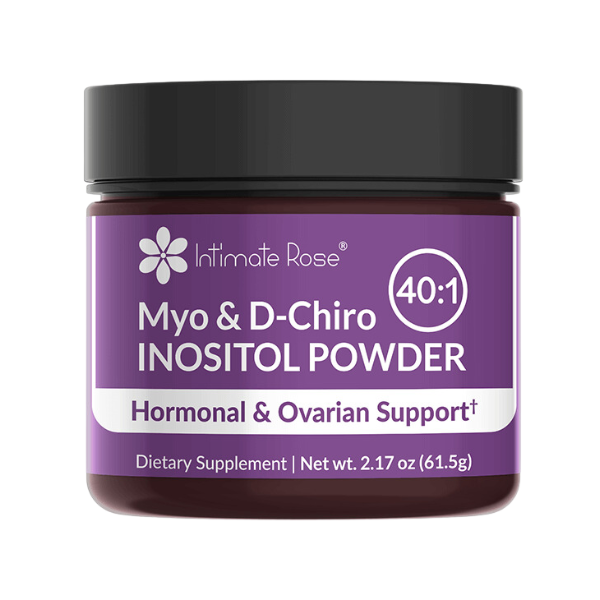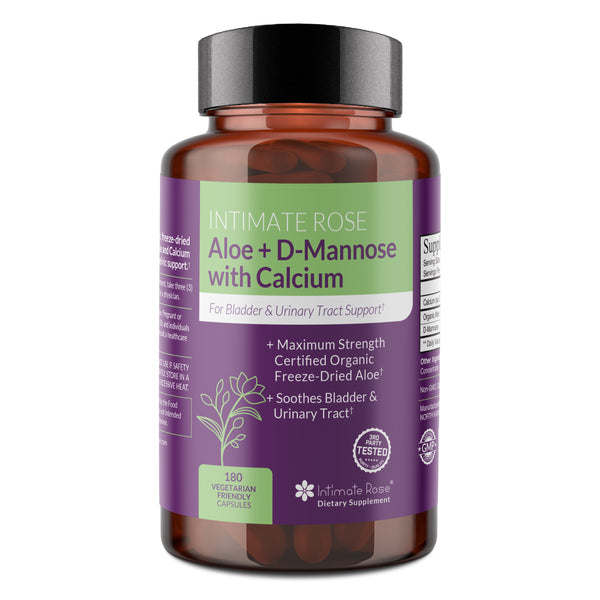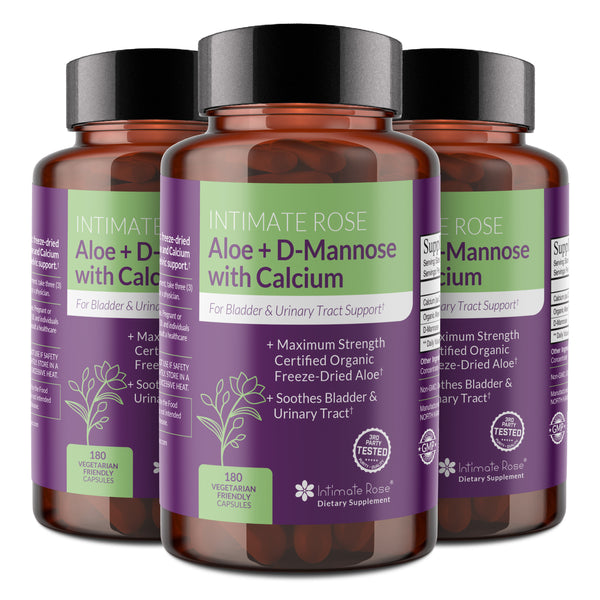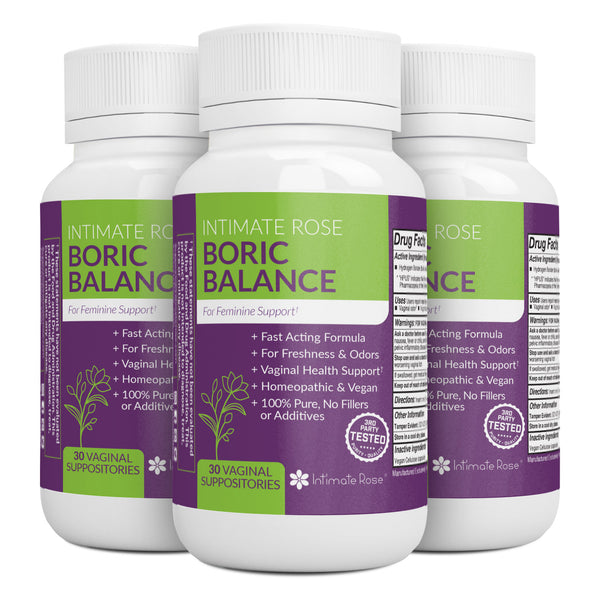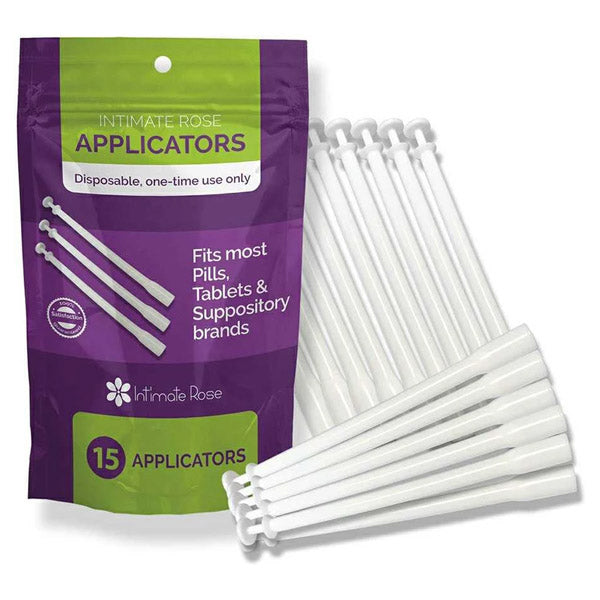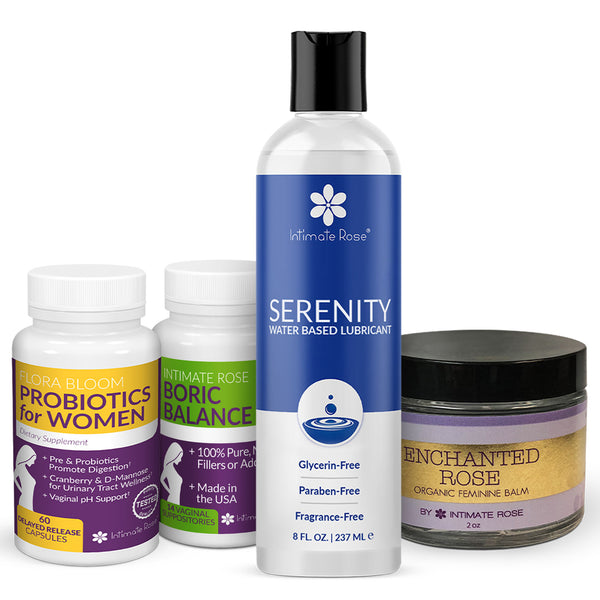Vaginal pH Balance | Test Your Vaginal pH | Symptoms
A balanced vaginal pH for women in their reproductive years usually measures somewhere between 3.8 and 4.5 on the pH scale. However, certain conditions, lifestyle changes, or infections can alter the vaginal pH balance, resulting in uncomfortable symptoms like vaginal discharge or itching.
In this article, we’ll discuss what affects vaginal pH balance and how to restore it.
What Does pH Mean?
The pH scale measures how acidic or alkaline something is on a scale from 1 to 14, with the number 1 representing the highest acidic measurement and the number 14 the most alkaline. pH stands for ‘Potential Hydrogen’, meaning the measurements on the pH scale are determined according to how many hydrogen atoms are present.
Water, for example, has a neutral pH measurement of 7. Acidic products like lemon juice or vinegar measure 2, and bleach or liquid drain cleaner are highly alkaline with a measurement of 14. Blood is more alkaline than the vagina with a measurement of 7, and semen too, with a measurement of 7.2 – 8.2.
A Healthy Vaginal pH Balance
According to research, a normal vaginal pH is mildly acidic, placing it somewhere between 3.8 and 4.5 on the pH scale. This mild acidity is caused by natural bacteria in the vagina known as Lactobacilli, which is responsible for producing lactic acid. And lactic acid helps to maintain a lower production of alkaline bacteria, thereby maintaining a healthy vaginal pH balance.
A decrease in the production of lactobacilli, on the other hand, will result in higher measurements on the pH scale, meaning the vaginal ecosystem is more alkaline. This alkaline environment allows for harmful bacteria to thrive, causing conditions such as yeast infections or Bacterial Vaginosis (BV), as well as providing less protection for women against sexually transmitted infections.
Can You Test Your Vaginal pH?
Yes, vaginal pH test strips, which can be bought over the counter at a pharmacy, are used to test vaginal pH and determine if it is balanced or imbalanced. Something to bear in mind when testing your vaginal pH, however, is that it can fluctuate before or during menstruation, and after sex.
It is also important to understand that even though a vaginal pH test strip will reveal the acidic and alkaline levels of the vagina, these tests do not diagnose or confirm yeast infections, sexually transmitted infections, or BV. So if you are experiencing any adverse symptoms in the vaginal area, it is always best to speak with your doctor.

Things Off Down There?

Things Off Down There?
Symptoms of Vaginal pH Imbalance
Should your vaginal ecosystem encounter any infections or issues that affect the natural pH balance, you will more than likely experience one or more of the following symptoms:
- An increase in the amount or color of your vaginal discharge.
- A difference in the odor of your vaginal discharge. Usually, the presence of an infection or vaginal pH imbalance will alter the vaginal odor and may smell fishy.
- Itching in and around the vaginal area.
- Burning sensation when urinating.
The Ultimate Vaginal Bundle

What Causes Vaginal pH Imbalances & How To Restore Them?

1. Vaginal Douching
Douching is a method of rinsing the vagina with water and other liquids that has become increasingly popular in America. However, research has shown that douching reduces the number of good bacteria known as lactobacilli, which makes the vagina more alkaline, allowing unwanted bacteria to grow.
The production of these unwanted bacteria causes a vaginal pH imbalance, which, in turn, can result in vaginal infections such as yeast infections or BV, as well as difficulties during pregnancy, and sexually transmitted infections.
Instead of douching, wash the intimate areas with some warm water and unscented soap. Neither of which will upset your pH balance. Women’s vaginas are self-cleaning organs and do not need to be internally rinsed.
When it comes to vaginal hygiene, it is also helpful to know that wiping the female genitalia from front to back after using the bathroom will prevent the spread of harmful bacteria from the anus region to the vagina.
2. Sex Without Condoms
Sex can throw off your pH balance and is one of the most common causes. That's because unprotected sex can have a two-fold effect on the vaginal pH balance. Firstly, sperm is more alkaline than the natural acidity of the vagina and the presence of semen during sex can temporarily alter the natural pH balance.
This will generally right itself after intercourse and is usually nothing to worry about. A gentle wash of the female intimate area with warm water and unscented soap after intercourse can help to rebalance the vaginal pH.
Unprotected sex can also result in sexually transmitted infections (SDI’s), which sequentially result in a vaginal pH imbalance as well as symptoms specific to the STI. Additionally, intercourse with multiple partners will lead to a higher amount of bacteria and an increased disruption to the natural pH of the vagina.
To prevent vaginal pH imbalances or STIs caused by unprotected sex, use a condom. According to a report in the Journal of Epidemiology, the risk of sexually active women developing STIs or BV is reduced by up to 63% when condoms are used consistently.
3. Menstruation & Using Tampons
Menstrual blood is more alkaline than your vagina and can cause the pH to change, but usually only marginally. However, the use of tampons during menstruation can further disrupt the natural pH balance. Tampons are designed to soak up liquid, but they are also capable of soaking up the good lactobacilli bacteria in the vagina, which can have consequences on the vaginal pH.
If you are using tampons, ensure that you change them regularly. Or instead of using tampons, women’s health experts advise women to use a menstrual cup, which collects menstrual fluid without soaking up the good bacteria and aids substantially in maintaining a healthy vaginal ecosystem.
4. Taking Antibiotics
Because antibiotics are designed to kill all bacteria, they can be responsible for destroying good bacteria, such as lactobacilli, too. A helpful way to counteract this is to ingest a daily probiotic while taking a course of antibiotics.
Promising results are also emerging from current studies to show that an ongoing daily probiotic supplement, like Flora Bloom Probiotics for Women from Intimate Rose, can significantly help maintain a healthy vaginal pH balance, as well as improve digestion, and lower the risk of recurring BV infections.
5. Tight Clothing, Underwear & Swimsuits
Believe it or not, tight clothing and inappropriate underwear can have a large impact on your vaginal pH balance. Pants or jeans that are too tight, and underwear made from synthetic materials can encourage an overheated environment for harmful bacteria to grow and thrive.
Instead, wearing pants and jeans that allow for air to circulate, as well as loose-fitting and breathable underwear made from cotton, are considered the best options for vaginal health.
Changing wet swimsuits or damp underwear from a build-up of moisture is highly recommended too.
6. Perimenopause & Menopausal Vaginal pH Fluctuations
Just as the vaginal pH can be altered during menstruation due to bleeding, the pH level can also change during perimenopause and menopause. This is thought to be due to a change in hormone levels, particularly a drop in estrogen.
One recent study found that the average vaginal pH for women during menopause is 5.3. In this case, rebalancing hormones is the best way to rebalance the vaginal pH.
Some menopausal women take natural supplements such as Chasteberry from Intimate Rose, while others opt for hormone replacement therapy. It is generally advised to speak with your doctor regarding the options, as menopause can present varied symptoms for different women.
Conclusion
Although many women experience fluctuations in their vaginal pH balance throughout their lifetime, in most cases it can be restored naturally and easily. Avoiding douching and unprotected sex are two habits you can change to keep bacteria levels balanced and your vagina protected.
Practicing good hygiene, wearing the right clothing, and taking a daily probiotic or supplement will also keep vaginal pH balanced. Lastly, scheduling regular check-ups with your gynecologist or healthcare provider will help you to stay informed.
References
Frontiers in Immunology - Role of Lactobacilli and Lactoferrin in the Mucosal Cervicovaginal Defense https://www.frontiersin.org/articles/10.3389/fimmu.2018.00376/full
American Public Health Association - Vaginal Douching and Adverse Health Outcomes - https://www.apha.org/policies-and-advocacy/public-health-policy-statements/policy-database/2014/07/29/13/06/vaginal-douching-and-adverse-health-outcomes
National Center for Biotechnology Information - Higher vaginal pH is associated with Chlamydia trachomatis infection in women: a prospective case-controlled study -
https://pubmed.ncbi.nlm.nih.gov/15899081/
Epidemiology – Condom Use and its Association With Bacterial Vaginosis and Associated Vaginal Microflora - https://journals.lww.com/epidem/Fulltext/2007/11000/Condom_Use_and_its_Association_With_Bacterial.9.aspx
National Center for Biotechnology Information - Vaginal pH: A marker for menopause

Things Off Down There?




